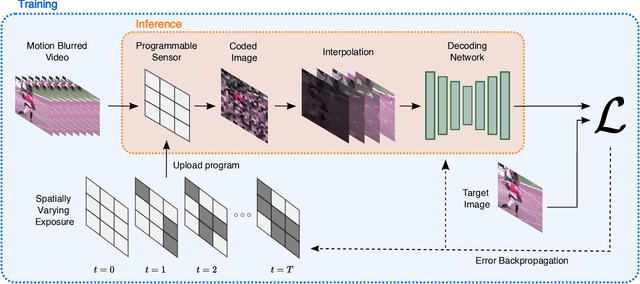Cindy M. Nguyen
Diffusion in the Dark: A Diffusion Model for Low-Light Text Recognition
Mar 07, 2023



Abstract:Images are indispensable for the automation of high-level tasks, such as text recognition. Low-light conditions pose a challenge for these high-level perception stacks, which are often optimized on well-lit, artifact-free images. Reconstruction methods for low-light images can produce well-lit counterparts, but typically at the cost of high-frequency details critical for downstream tasks. We propose Diffusion in the Dark (DiD), a diffusion model for low-light image reconstruction that provides qualitatively competitive reconstructions with that of SOTA, while preserving high-frequency details even in extremely noisy, dark conditions. We demonstrate that DiD, without any task-specific optimization, can outperform SOTA low-light methods in low-light text recognition on real images, bolstering the potential of diffusion models for ill-posed inverse problems.
Learning Spatially Varying Pixel Exposures for Motion Deblurring
Apr 14, 2022



Abstract:Computationally removing the motion blur introduced by camera shake or object motion in a captured image remains a challenging task in computational photography. Deblurring methods are often limited by the fixed global exposure time of the image capture process. The post-processing algorithm either must deblur a longer exposure that contains relatively little noise or denoise a short exposure that intentionally removes the opportunity for blur at the cost of increased noise. We present a novel approach of leveraging spatially varying pixel exposures for motion deblurring using next-generation focal-plane sensor--processors along with an end-to-end design of these exposures and a machine learning--based motion-deblurring framework. We demonstrate in simulation and a physical prototype that learned spatially varying pixel exposures (L-SVPE) can successfully deblur scenes while recovering high frequency detail. Our work illustrates the promising role that focal-plane sensor--processors can play in the future of computational imaging.
 Add to Chrome
Add to Chrome Add to Firefox
Add to Firefox Add to Edge
Add to Edge